Camper Shells (Toppers) & Rooftop Tents – Which Is Best For Your Overland Truck Camping Needs? Pros, Cons & What To Consider Before Buying
There seems to be a back-and-forth debate going on in the off-roading community – which is the better option for camping out of your truck, a camper shell (aka topper), or a rooftop tent and the associated mounting system?
Some people swear by their rooftop tent setups on bed racks. Others seem to think that RTTs are all hype and that the better way to sleep out of your truck is in a camper shell or topper. Maybe… you could even run both! More on that later in this post.
With so many companies releasing off-road-oriented camper shells, the debate between tents and campers has been getting heated. I have personally run both setups on my truck and will give you a rundown of the important things I noticed to help you decide.
Toppers Vs. RTTs For Camping
Cargo Space
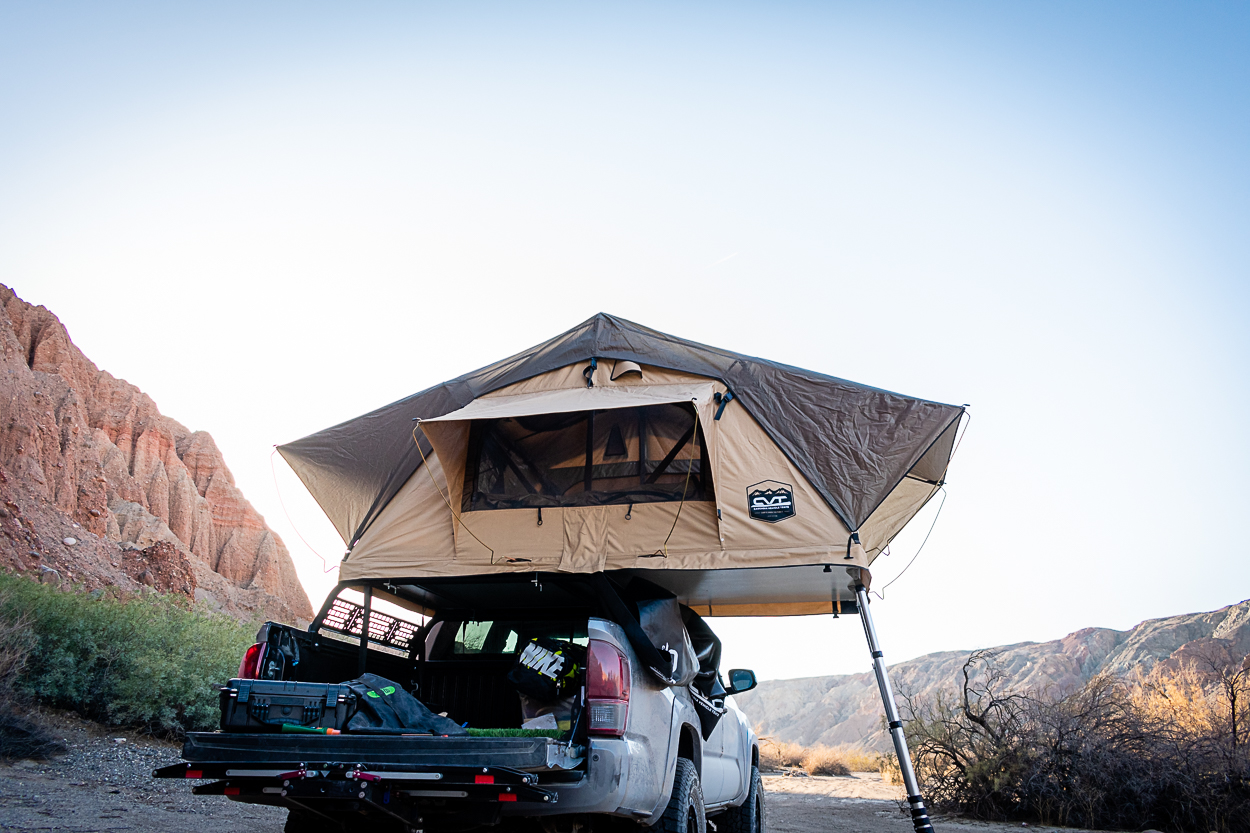
One of the first things to consider when comparing RTTs and camper shells is cargo space. If you have taken your Tacoma camping, you know that the amount of gear you find essential quickly stacks up. Having a rooftop tent setup means that you are separating your sleeping space from your storage space.
When I had my tent on a bed rack, my entire bed space was still usable as storage and I could leave everything there when I was sleeping. On the flip side, when I sleep inside my topper, I need to remove everything I have stored in the bed and put it either on the ground or in the cab.
If you feel like you have (or will have) your bed storage system dialed in and maybe have accessories like a fridge, battery setup, or drawers – a rooftop tent could be advantageous since you can sleep above all of that without removing it.
If you value permanent storage space and do not want to remove anything to sleep, then an RTT will win this category. Otherwise, you may find value in being able to lock your stuff safely inside a camper shell.
It’s also worth considering, that without a closed bed topper of some sort, your gear will always be exposed to the elements and potential prying eyes. Camper shells like the GFC topper are super secure, with locks on all of the windows to prevent theft. On a final note here, the total storage capacity on a topper will always be greater with a topper, compared to a bed rack or otherwise. One of the biggest benefits of a truck bed, is the ability to create a huge amount of sealed space with a topper.
Form & Function
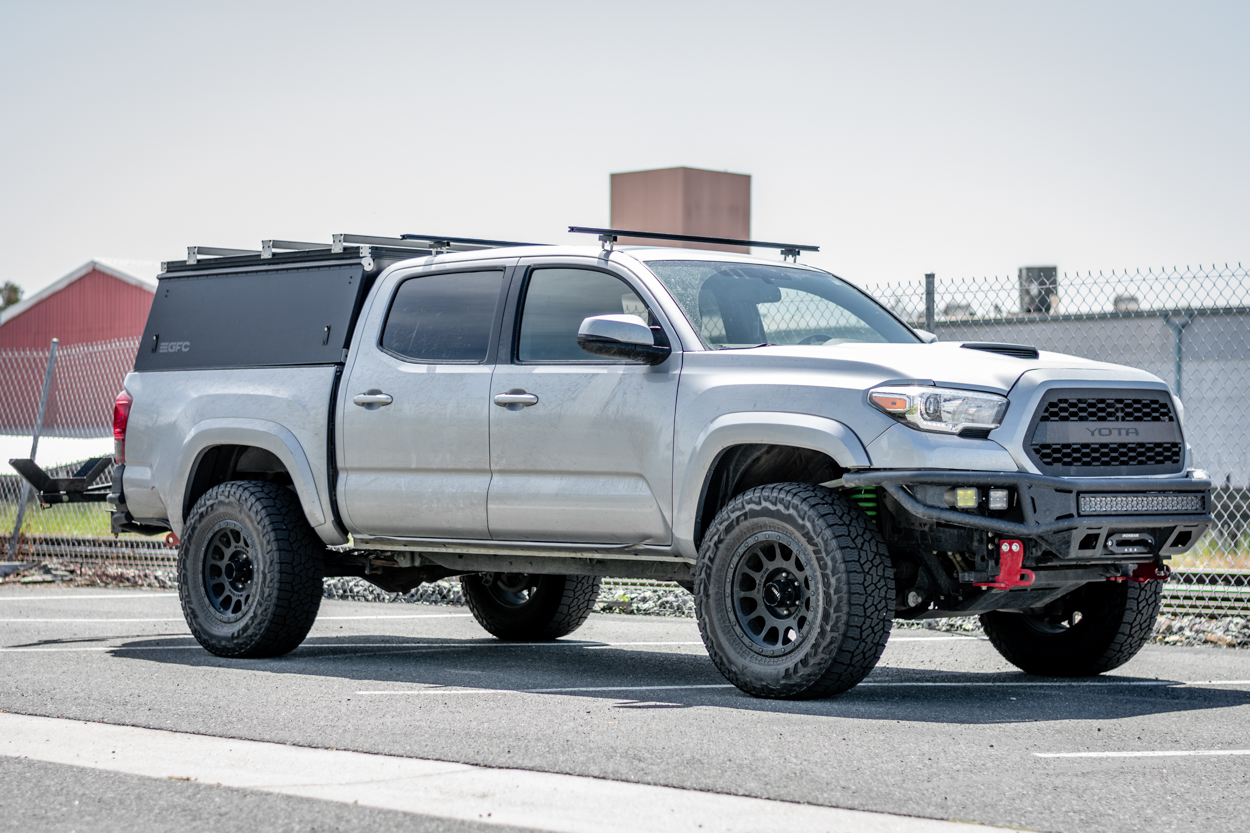
Another thing to consider is form vs. function – or in the camper shells case, a combination of both.
RTTs On Bed Racks
Rooftop tents have a tendency to sit higher than the height of the cab which causes increased drag and wind noise, impacting MPGs, and can have a negative impact on the aesthetics of the build overall. This is especially true when you have a mid or cab-height bed rack. The main benefit of RTTs on bed racks though is that they offer quick and easy access to your gear in the bed of your truck. Once again though, all of your items are exposed to the elements.
Camper Shells & Toppers
On the other hand, camper shells excel in form and function. I can sleep inside my GFC without anyone knowing I’m there. It also sits very sleekly on the back of my truck which I prefer over my previous tent setup. It follows the body lines well and creates a good looking profile. If either of these factors is important for your uses, a camper shell will be the way to go. And to reiterate, keeping your items out of dust, rain or otherwise is optimal.
Setup & Takedown
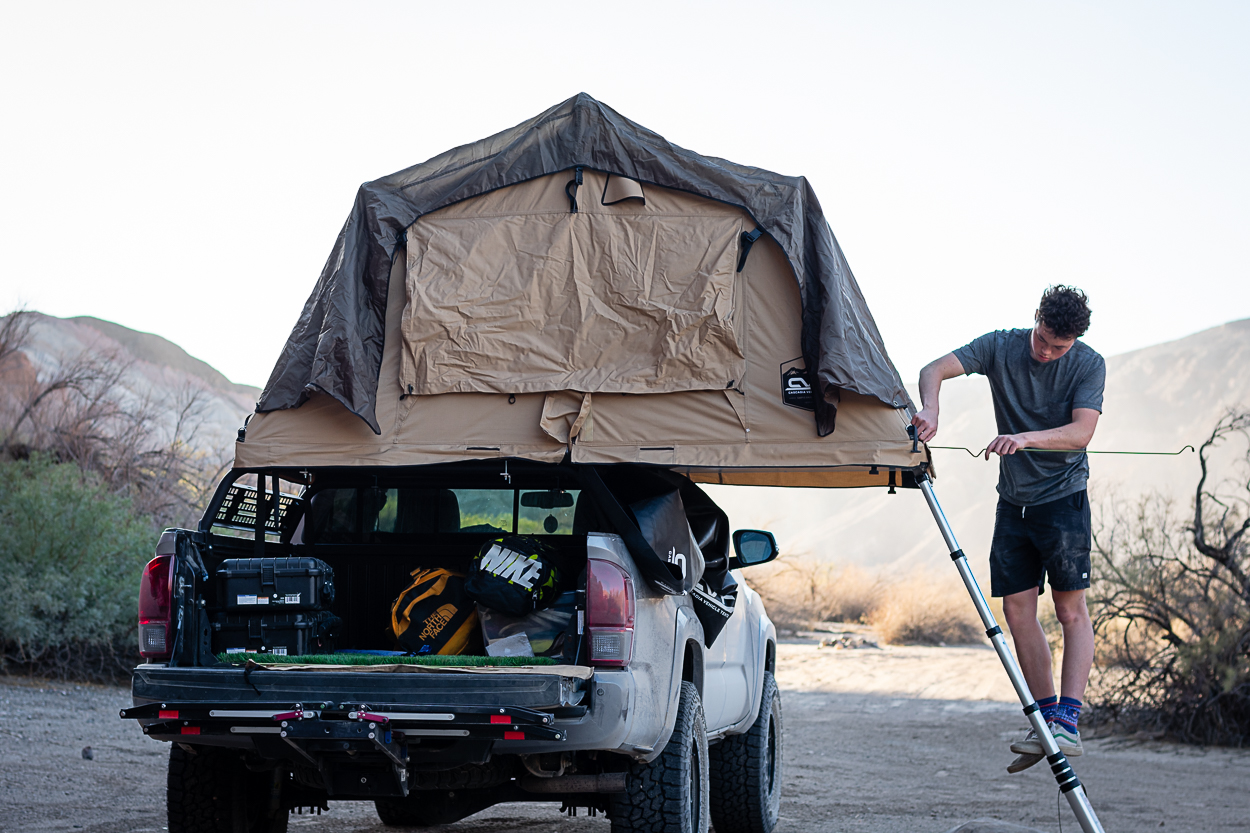
Initially, you might think the camper shell option takes the cake in the setup/takedown category. But, it’s not quite that clear.
Obviously, rooftop tents have much more of a setup process than popping open a camper shell. When I had my tent mounted to a bed rack, it took me about 10-15 min from when I hopped out of my truck to when the tent was fully open. This included removing the cover, propping up the windows, and setting up my sleeping bag inside. While this was by no means a difficult process, it was tedious to some extent.
Now, for the topper, you may think it is as easy as dropping the tailgate and hopping in bed. But if you carry a lot of items, you will need to remove everything from your bed. I mentioned this in the cargo space section above, but it would be hard to sleep in a topper with all of your gear in there with you. Unless you have a very well-designed storage system that accounts for sleeping space, you will need to remove items to get some sleep.
Cost
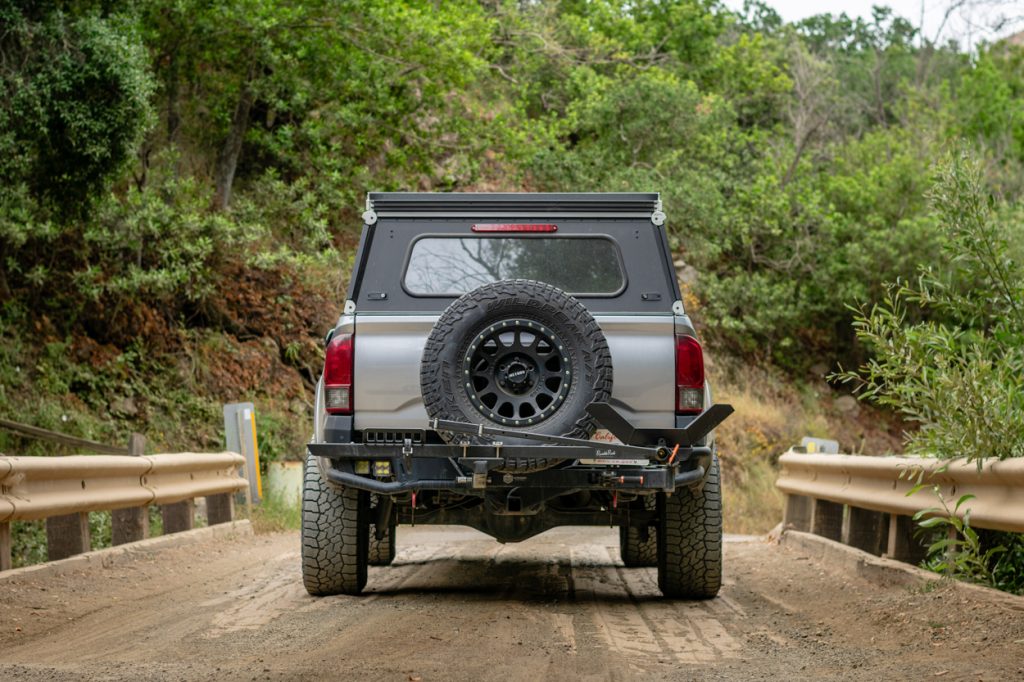
When it comes to cost, there are a lot of different variables at play. Let’s start with rooftop tents.
With an RTT setup, you will need the tent itself and either a bed rack or a camper shell that allows you to mount the tent to your truck. If you are trying to save as much money as possible, you can get some cheap crossbars that mount to the bedsides.
In general, the cheapest rooftop tents go for around $1500 and you can expect the cheapest crossbars to be $300-500. After tax, shipping, etc., you are typically looking at almost $2000. Of course, if your budget allows, you can mix and match mounting systems and tents that are higher quality with more features and it can easily run you $5000+. There are plenty of bed racks out there that run well over $1000, and higher-end RTTs that cost $3000-5000.
As for camper shells, a used fiberglass topper would normally go for about $1000-2000, give or take. Keep in mind the issues you may experience with a used option. You also need to factor in the cost of bed platforms or interior carpeting if you are going to spend more than a couple of nights in your camper. As with RTTs, the prices can vary for features. A top-of-the-line camper shell like the GFC topper that is specifically built for rugged, off-road terrain can also reach that $5000-6000 mark.
As with most accessories that you can buy for your truck, I go by the “buy once cry once” motto. I previously had a SnugTop camper shell and then the CVT tent setup before finally settling with the GFC topper. The GFC has been by far my favorite and I wish I started with that setup originally.
Comfort
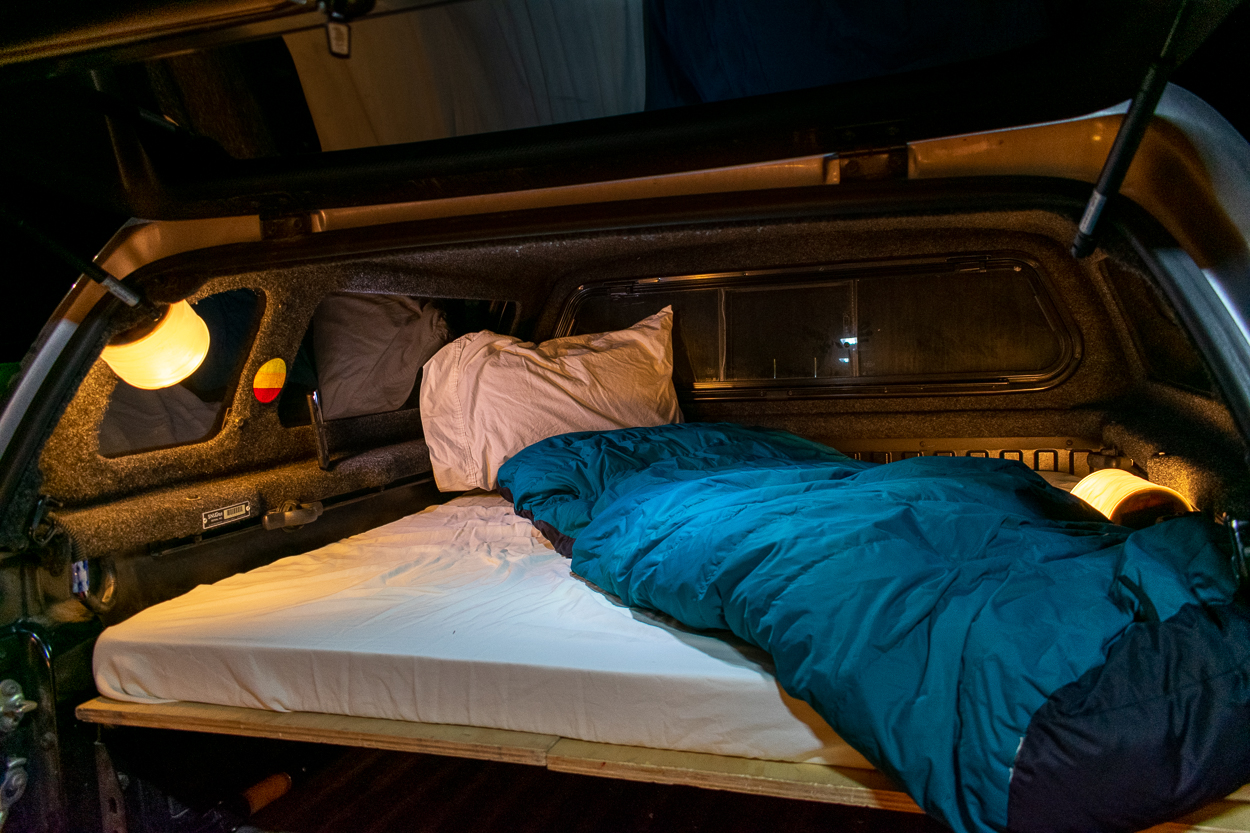
The comfort category will be a little bit more straightforward. The short answer is if you’re a bigger, taller person, get a rooftop tent. Here’s why.
In a camper, you are limited by the length of your bed. So if you have a short bed and are taller, you will need to sleep diagonally unless you sleep with your knees bent. I would say anyone closer to 6 foot and sleeping in a camper with the tailgate up is going to be a bit cramped. It works, but you will need to accommodate for the lack of length. This wouldn’t be the case if you had a long bed, this only applies to short bed Tacomas. The benefit to a rooftop tent in this case is that when you open it up, there is additional length. So you’ll have extra leg room, albeit less width from side to side. Many RTTs are not as wide as your bed.
Another thing to consider with the camper setup is that on a cab-height topper, you will need to be aware of headroom. When sleeping on a bed platform in my camper, there were a few occasions when I forgot where I was and sat up in the morning only to smack my head on the ceiling. Not to say that RTTs provide much more head space, but something to consider.
The benefit to comfortability in the camper though, is that you will tend to be a lot warmer. It will trap heat better and wind won’t blow away your warmth. You can also have more of a bed setup similar to how you sleep at home.
Weather Resistance
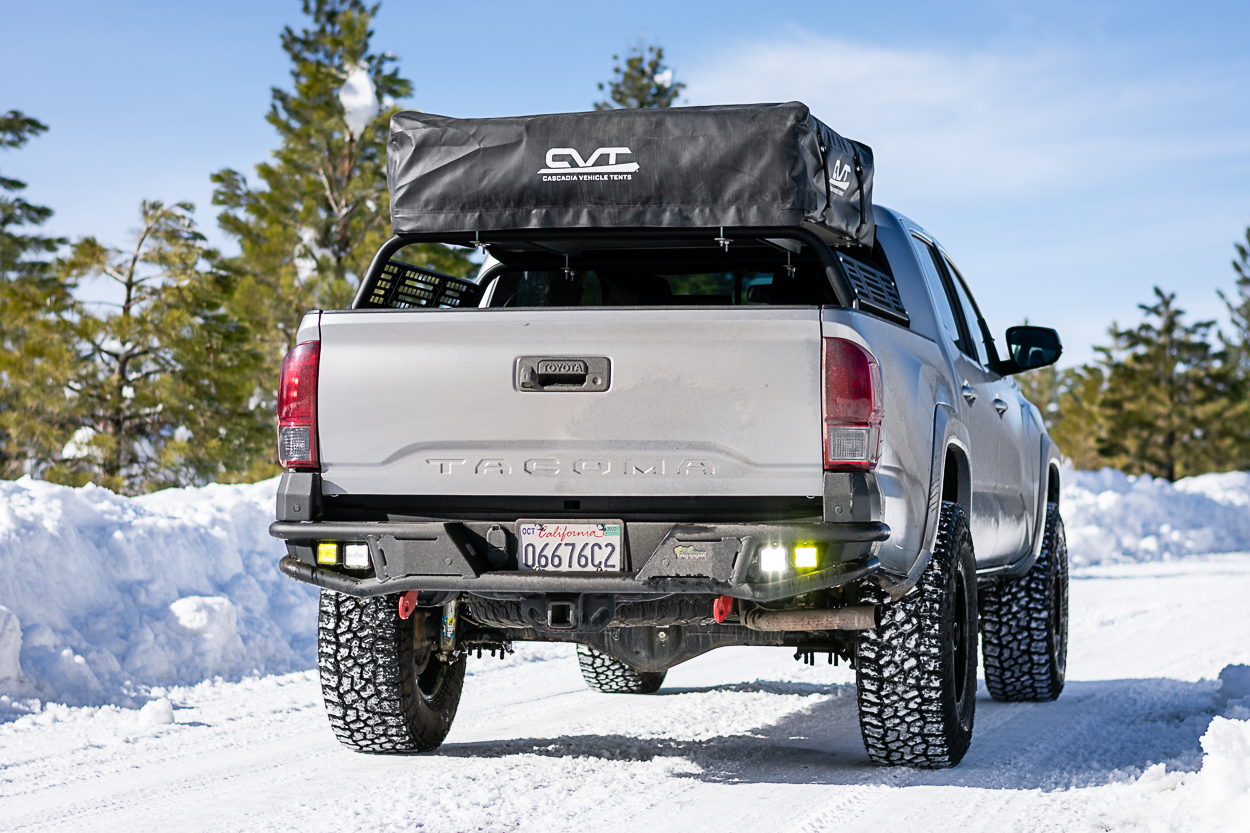
It should come as no surprise that a camper shell will have better weatherproofing than a rooftop tent. While a tent will usually keep you protected from the wind and rain, you will certainly experience more of the effects of inclement weather.
Camper shells will perform extremely well during harsh weather. Not only are the walls surrounding you solid, but weather stripping around the edges keeps any rain or snow from ever entering your bed space. From my experience, toppers will also retain your body heat extremely well. I have spent some freezing nights inside camper shells and actually had to remove layers because I was too warm. That has never been the case for me during cold nights inside my RTT.
Camper/Topper + RTT Combo – Best Of Both?
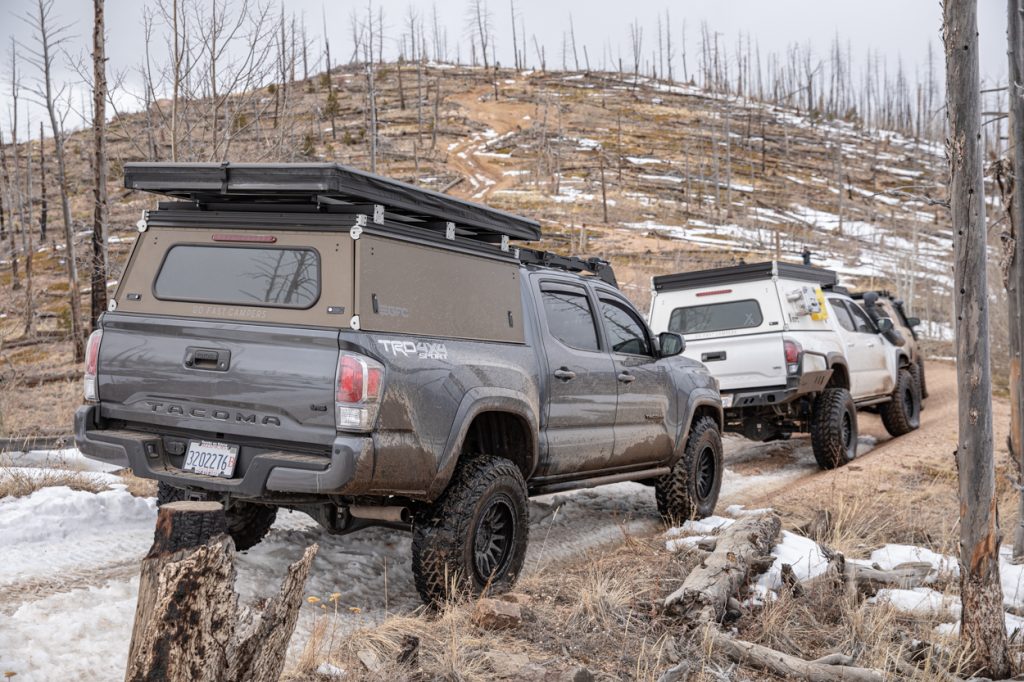
It’s worth noting – you don’t just have to pick one or the other. As seen above, Kenny is running a GFC topper with a lightweight RTT. This combination might be something to consider if you are still on the fence.
I already know what some people are thinking… why not just buy a camper? Well, for one, if you find an affordable RTT, it will still cost less than a camper setup (comparing the GFC topper with a tent to the full GFC camper). Having the ability to separate these two items can be beneficial. Many people do not want to run a bulky setup year round. Being able to remove your tent allows for storage away from the elements and removing excess weight when it’s not needed – this ultimately allows you to use your truck more like a truck (ex. hauling materials from home improvement store).
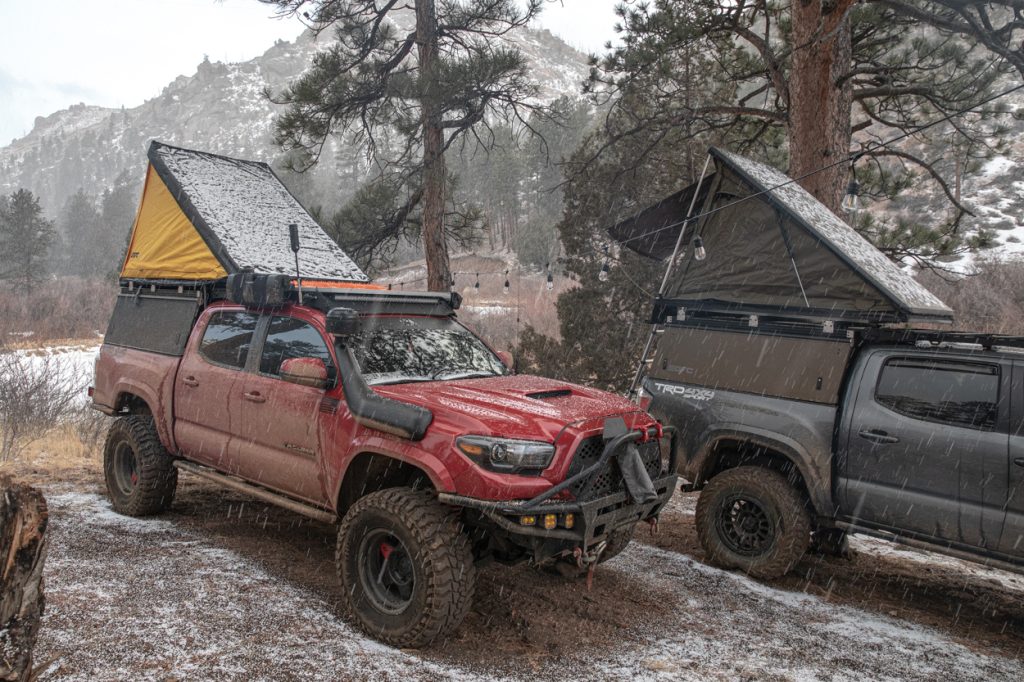
Now, the ideal situation (to keep down weight and cost) is to run a low profile tent. Sure, you can run a larger folding soft shell, but then you run into the increased drag we mentioned before. Still very doable, but something to understand. Low profile tents are typically lighter, allowing for a lower center of gravity, and a better driving experience. With Kenny’s truck, the weight is distributed so well that you cannot tell the tent is mounted.
At the end of the day, running these two products on the same truck will give you the ultimate flexibility for weekend camping adventures, while allowing for maximum utility during more regular daily use. Paired with some quick tent disconnects, this might be the best all around setup for the vast majority of users. Best part? You can still sleep in the bed if you don’t feel like mounting your tent last minute.
Quick Summary
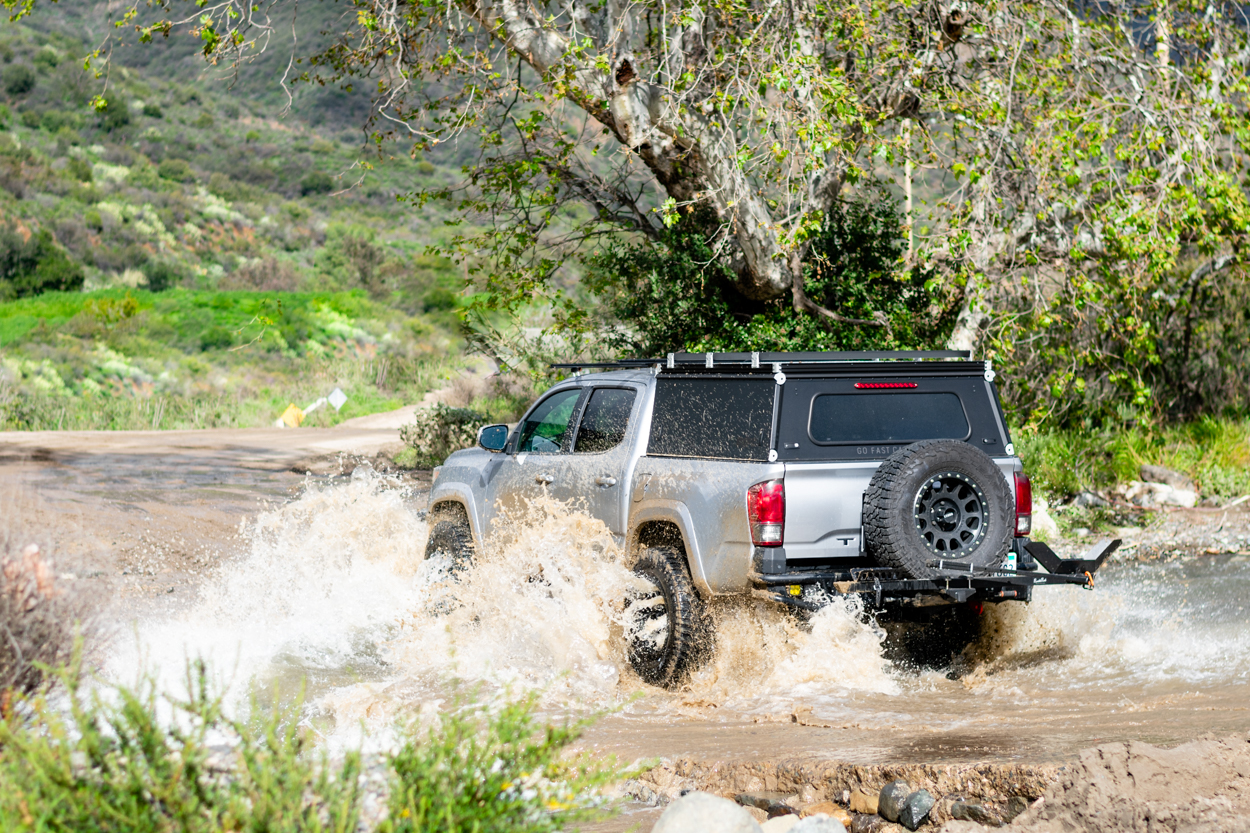
In case you came right to this section, I am going to lay out my experience with camper shells and RTTs. If you have any questions I would refer to the earlier parts of this post.
Pros – Camper Shell
- Very good weather resistance
- More secure (lockable hard storage)
- Easier stealth camping
Pros – RTT
- More sleeping space (length for short bed trucks)
- Easier to remove (although some mounts can be tedious to disconnect)
- Free up bed space for storage
Cons – Camper Shell
- Less removable (there are products that can help)
- Tighter sleeping space (mainly for short bed, although width is not an issue)
- Storage capacity limited while sleeping
Cons – RTT
- Bigger campsite footprint
- Less protected from the elements
- Not as secure
- Requires additional mounting solutions
Final Thoughts
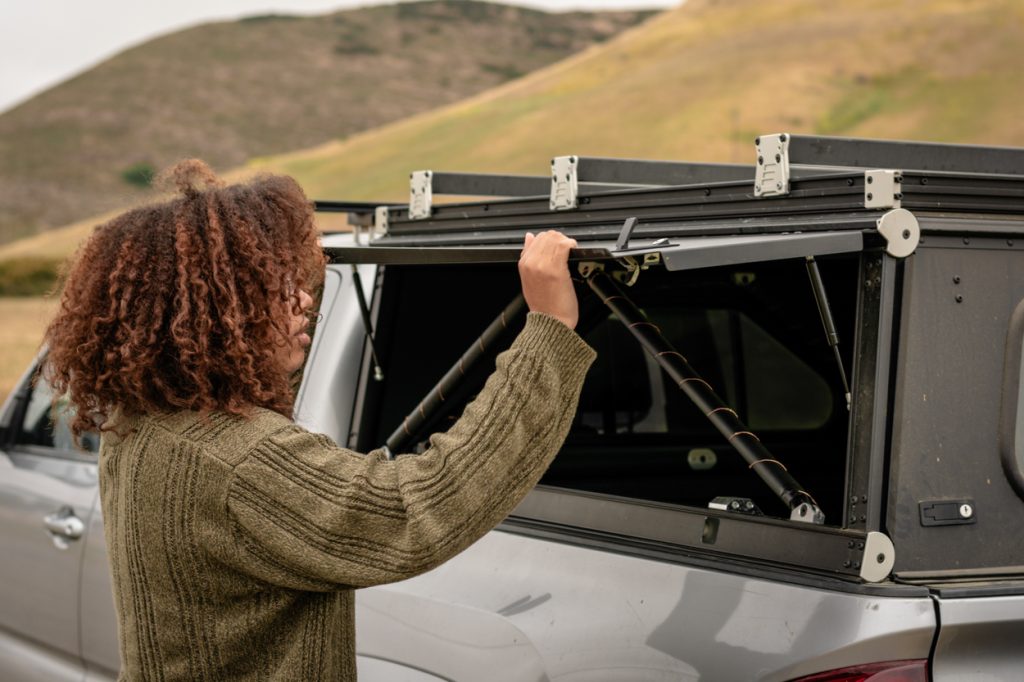
Ultimately, the decision is yours. I settled on a topper for the versatility and having a covered bed. Not to mention the overall utility and lightweight design. If it ever comes to it, I still have the option to add a rooftop tent. Alternatively, I could just move into a full-blown pop-up wedge camper (GFC also offers these).
In my experience, rooftop tents excel in maximizing storage capacity and sleeping space (mainly for length). They allow for relatively quick setup and takedown and keep you high off the ground, away from any creepy crawlers or moisture. If you are somewhat of a weekend warrior and only camp a few nights at a time, a rooftop tent could be perfect, especially since it’s more removable.
Camper shells, on the other hand, excel in security, weather resistance, and simplicity. There aren’t a ton of moving parts on a canopy, it’s just the shell. Your sleeping space will be more confined, but you will be less affected by harsher weather. If you are planning on spending more prolonged periods of time living out of your truck, this could be your solution.
You know your needs the best, but hopefully, this post has given you some insight into the pros and cons of each and has gotten you closer to a solution. At the end of the day, either setup will help get you out into nature which is the important part. And, if you really hate your choice, you can always sell it and swap it for the other.
If you are really unsure of what to do, I will say that I love my GFC topper, and being durable, secure, and ready for off-road is something not many other toppers offer.
